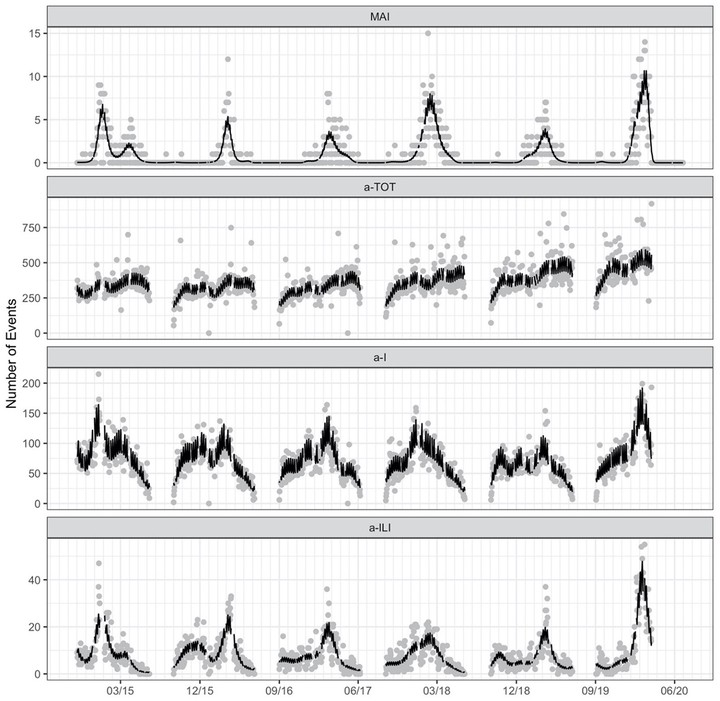Cause-specific student absenteeism monitoring in K-12 schools for detection of increased influenza activity in the surrounding community—Dane County, Wisconsin, 2014– 2020

Abstract
Background Schools are primary venues of influenza amplification with secondary spread to communities. We assessed K-12 student absenteeism monitoring as a means for early detection of influenza activity in the community. Materials and methods Between September 2014 and March 2020, we conducted a prospective observational study of all-cause (a-TOT), illness-associated (a-I), and influenza-like illness–associated (a- ILI) absenteeism within the Oregon School District (OSD), Dane County, Wisconsin. Absenteeism was reported through the electronic student information system. Students were visited at home where pharyngeal specimens were collected for influenza RT-PCR testing. Surveillance of medically-attended laboratory-confirmed influenza (MAI) occurred in five primary care clinics in and adjoining the OSD. Poisson general additive log linear regression models of daily counts of absenteeism and MAI were compared using correlation analysis. Findings Influenza was detected in 723 of 2,378 visited students, and in 1,327 of 4,903 MAI patients. Over six influenza seasons, a-ILI was significantly correlated with MAI in the community (r =0.57; 95% CI: 0.53–0.63) with a one-day lead time and a-I was significantly correlated with MAI in the community (r = 0.49; 0.44–0.54) with a 10-day lead time, while a-TOT performed poorly (r = 0.27; 0.21–0.33), following MAI by six days. Discussion Surveillance using cause-specific absenteeism was feasible and performed well over a study period marked by diverse presentations of seasonal influenza. Monitoring a-I and a- ILI can provide early warning of seasonal influenza in time for community mitigation efforts.